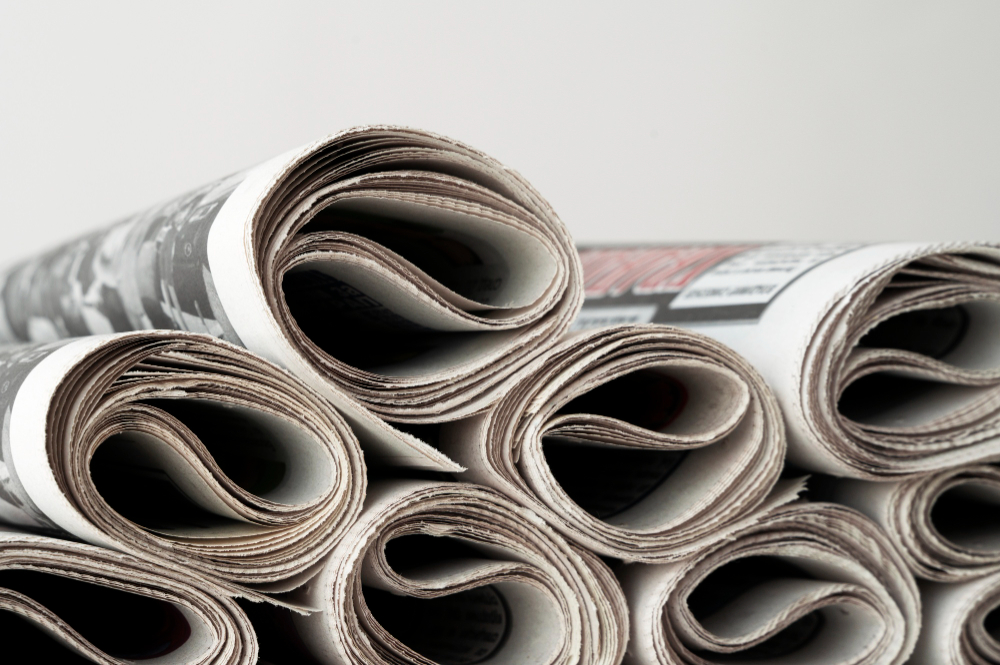In today’s digital age, news is primarily consumed online, and newspapers seem to be losing their importance. Nevertheless, the traditional medium of newspapers still holds a special place in journalism.

From historic newspapers to contemporary print publications, newspapers continue to offer a unique reading experience and aesthetic appeal. This guide examines newsprint properties, manufacturing processes, and environmental impact, highlighting newsprint’s continued relevance in the world of media.
Understand the Newspaper or Newsprint
Newspaper is a type of paper specially developed for printing newsprint. It features lightweight, low cost and high absorbency. These properties make newsprint ideal for mass production and rapid distribution of news. This paper is usually made from mechanical or chemical pulp and has a slightly yellowish appearance that distinguishes it from other types of paper.
Manufacturing Process
Making newspaper print involves several important steps. First, wood chips from trees, especially coniferous species such as spruce and pine, are processed into pulp. Mechanical pulping mechanically crushes logs, while chemical pulping treats wood chips with chemicals to eliminate impurities and break down fibers. The method you choose affects the quality of the paper you get and your environmental impact.
After pulping, the fibers are cultivated and mixed with water to form a pulp slurry. This slurry is then distributed onto a wire mesh conveyor belt where excess water drains and the slurry begins to bind. The pulp sheets are then pressed and dried to reduce moisture and create a more stable paper product.
Consideration for the environment
Newsprint has been criticized for its environmental impact, but the industry has made great strides in employing sustainable practices. Many paper mills now employ efficient recycling systems that utilize post-consumer waste and incorporate recovered fibers into the production process. Additionally, some manufacturers are switching to cleaner production methods such as Elemental Chlorine Free (ECF) or Total Chlorine Free (TCF) bleaching processes to minimize harmful emissions.
In addition, the light weight of newsprint results in lower shipping emissions compared to heavier paper grades. It’s recyclable and biodegradable, making it an eco-friendly option for sustainability-conscious readers.
Newspaper Credibility
Despite the rise of digital media, newspapers still have a special appeal that attracts both readers and journalists. The tactile experience of picking up a physical newspaper, turning pages, and touching words written in ink creates a sensory connection with the news. Newspapers also provide relief from screen glare for a more relaxed and focused reading experience.
The visual beauty of newsprint plays an important role in conveying news. As the ink absorbs into the paper, it creates a unique texture that gives printed text and images a sense of authenticity. Plus, the large format of newspapers allow you to include high-impact visual layouts and compelling photography that grabs the reader’s attention and enhances your storytelling.
Preserving the Legacy of Newsprint
Newspapers have enormous historical value, documenting important events, stories and social changes over the years. Libraries, archives and private individuals often keep old newspapers as valuable relics. Their physical presence and classical quality allow future generations to explore and learn from the past.
Conclusion
Digital media have revolutionized the way we consume news, but newspapers remain an essential medium for journalism. Its unique properties, manufacturing process and timeless appeal all contribute to its enduring relevance.
As we navigate our ever-evolving media landscape, let’s not forget the continued importance of newspapers as a medium for disseminating information and as a tangible part of our collective history.

